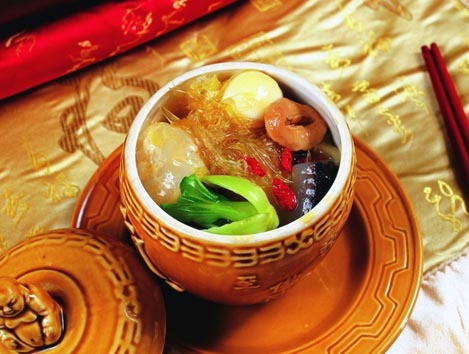Have you visited the 10 most beautiful ancient roads in China? The ancient road is sandwiched between wild mountains and rivers, full of unknown dangers and poetry. Along them, Zhang Qian once sent an envoy to the Western Regions, Princess Wencheng married a foreign country, and Genghis Khan went on an expedition to the European continent… These roads wind through high mountains, deserts, and vast grasslands.

1. Huihang Ancient Road
The Huihang Ancient Road starts from Fuling Town, Jixi County, Huizhou in the west, and ends at Maxiao Township, Lin’an City, Zhejiang Province in the east. It is located on the north side of Qingliangfeng National Nature Reserve, with Huangshan Mountain in the north and Tianmu Mountain in the south. The total length is 25 kilometers. It was an ancient ancient road. An important link between Huizhou and Hangzhou, the best-preserved section is the Winding Stone Step Trail in Jixi County, which is the essence of the Hui-Hangzhou Ancient Trail.
According to historical records, this ancient road was built as early as the Tang Dynasty. The Huihang Ancient Road was an important channel for exchanges and trade between Huizhou merchants and Zhejiang merchants in history. Important scenic spots near the Huihang Ancient Road include: Zhangshan Grand Canyon, Hu Ancestral Hall, Qingliangfeng National Nature Reserve, Jiangnan First Pass, etc.
2. The Ancient Tea Horse Road
The Ancient Tea-Horse Road refers to a non-governmental international trade channel that exists in southwest China and uses caravans as the main means of transportation. It is a corridor for economic and cultural exchanges among ethnic groups in southwest China. The Ancient Tea-Horse Road is a very special regional title and is a natural scenery in the world. The most spectacular and mysterious tourist route, it contains endless cultural heritage.
The Ancient Tea-Horse Road originated from the tea-horse trade in the ancient southwest frontier. It flourished in the Tang and Song Dynasties, flourished in the Ming and Qing Dynasties, and was most prosperous in the middle and late World War II. The Ancient Tea Horse Road is divided into Sichuan and Tibet and Yunnan and Tibet. It connects Sichuan and Yunnan and Tibet, and extends into Bhutan, Nepal, and India until it reaches the Red Sea coast of West Asia and West Africa.
3. Schaller Trail
The Schaller Trail starts from Shate Ranch in Zhaosu County, Ili Kazakh Autonomous Prefecture in the north, and ends in Pochengzi, Wensu County, Aksu Prefecture in the south. It connects the north and south of the Tianshan Mountains, with a total length of 120 kilometers. It is a shortcut from Ili to southern Xinjiang and is an important part of the Silk Road. The most dangerous and famous ancient pass.
The Schaller Trail is a high-risk hiking adventure route that combines archeology and exploration. During the crossing, the fragmented Muzart glaciers, ice crevices, glaciers, and the raging South Muzart River will pose great threats to explorers.
4. Taibai Mountain Ancient Road
The Taibai Mountain Ancient Trail is located at the northern foot of Taibai Mountain, the main peak of the Qinling Mountains. Its entrance is located in Chaihushan Village, Yingge Town, Taibai County. The village is 45 kilometers away from Taibai County and 140 kilometers away from Xi’an.
Celebrities such as Li Bai, Du Fu, Han Yu, Su Shi, and Yu Youren have visited Taibai Mountain many times along this ancient route. Their footprints have covered the mountains and ridges of Taibai Mountain, and they have left behind a large number of exquisite poems praising the scenery of Taibai Mountain.
Entering from the trailhead of Taibai Mountain Ancient Road, there are temples every ten miles along the way. From bottom to top, there are also Xiabaiyun, Shangbaiyun, Main Hall, Camel Tree, Doumu Palace, Ping’an Temple, Mingxing Temple, Fangyang Temple, Xiaowen Gong, and Da There are temples or ruins such as Wen Gong, and the Baxiantai Temple at the top of Taibai Mountain at an altitude of 3767 meters. On this ancient road, the scenery changes as you walk, and the vegetation is distinct. Relics of the Fourth Glacier are everywhere. The pine forests, stone seas, stone rivers, cirques and other landscapes are breathtaking. “The ancient style and ancient road are still the same, and the current scenery is still the same. Invite you to come.”
5. Yinping Ancient Road
The Yinping Ancient Road has been a dangerous and rugged road since ancient times. In the past dynasties, except for local farmers, this road was only used for necessary war needs.
General Fu Youde of the Ming Dynasty once led his troops through this road. During the Red Army’s Long March, Li Xiannian once served as a supplement to the Red Army and walked through this road. Later, the People’s Liberation Army also walked through this road during its Qingchuan campaign.
The most dangerous place on the Yinping Road is Motian Ridge. The slope in the north and west of the ridge is gentle, and in the south there are steep cliffs with no path. It was from here that Deng Ai walked down from here wrapped in felt, guarded the Motian Ridge and plunged straight into Jiangyou Pass to destroy Shu. Nowadays, winding trails have been opened in Lingnan, and the locals call them “Jiudaoguai”.
6. Jianmen Shu Road
Jianmen Shu Road, Sichuan has “four wonders” – the wonders of Jiuzhaigou, the beauty of Emei, the seclusion of Qingcheng, and the danger of Jianmen. In ancient times, there were three Shu roads in northern Sichuan: Jinniu Road, Yinping Road and Micang Road. The most important Jinniu Road was Jianmen Shu Road.
Zhuge Liang, the prime minister of the Shu Han Dynasty in the Three Kingdoms, built a stone gate on the cliff in the middle of Dajian Mountain (Jianmen Mountain), so it was named Jianmen Pass. He also built the Feiliang Pavilion Road between the Big and Small Jian Mountains, hence the name of the Jiange Pavilion. The cliffs of Jianmen Pass are like city walls, and the single road is like a gate. One man can guard the pass, and no one can open it. It has become a battleground for military strategists of all ages, and it is also the throat of the ancient Shu Road.
7. Yuntai Ancient Road
Yuntai Ancient Road (Xiuling Official Road) is an ancient commercial road that has long been abandoned. It is located in the Yuntai Mountain Scenic Area, a 5A-level scenic spot. It is said that this ancient road was built in the Song Dynasty in 908 AD. It was the closest road from Shanxi to the capital of Bianliang at that time.
You can imagine how prosperous this ancient road was at that time. Without large tools and mechanical equipment, it would take a lot of effort to dig such a mountain crack and lay such a road.
8. Meiguan Ancient Road
Meiguan Ancient Trail is located at the top of Meiling, about 30 kilometers away from Nanxiong, Guangdong. It is said that it got its name from the surname of Mei Juan, the leader of the Yue people who moved to the south. Since its development by the Yue people, Meiling has become the foothold for the Han people from the Central Plains who migrated south. Another explanation for why Meiling got its name is that there are many plum trees here, so it is called “Meiling”.
Nanxiong Meiguan is an important transportation route between the north and the south and a battleground for military strategists. It is known as “Nanxiong” in history. The establishment of the Meiguan Ancient Road began in the Qin Dynasty.
9. Jingxi Mountain
The mountains in the west of Beijing are collectively called Xishan. Black gold is hidden everywhere in the mountains. Since the Yuan and Ming Dynasties, millions of households in the capital have relied on charcoal as their fuel.
In addition, the stone produced here and the firing of colored glaze were even more famous in the capital. Therefore, groups of camels and horses hauling coal and cargo would go back and forth on the mountain roads day after day and year after year. Over time, a network from the capital to the west was formed, and business travel routes as far away as Inner Mongolia and Shanxi.
10. Jing she Road
Jingshe Road is located in Jingde County, Anhui Province. In ancient times, there were four inter-county post roads, namely Jingjing, Jingji, Jingning and Jingtai, which were all stone roads. Due to the location of Xuan and Hui throat, it has become a battleground for military strategists. Most of the road sections have been converted into highways, and a few have been abandoned and unused.




